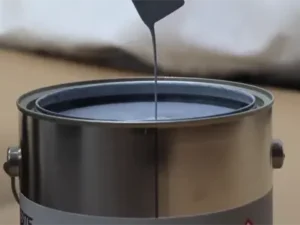
ASTM B-117 was the first nationally recognized salt spray standard. Published in 1939, this salt spray test is widespread and often recognized as the “gold standard” in corrosion testing. However, ISO 20340 offers a more realistic and updated method of testing, representing a significant improvement over ASTM B-117.
When the ASTM B-117 test is conducted, the coating to be tested is exposed to continuous salt spray for a pre-determined period of time. Panels are exposed at a 15 to 30 degree angle from vertical to continuous deposition of an atomized 5% NaCl solution at 35C and 97% humidity. While this test can measure resistance to corrosion in a continuous salt environment, it does not correlate well to real world atmospheric conditions. In addition, the wording of this standard provides opportunity for reduced consistency of testing because there is room for interpretation of the standard in how the panel is prepared and what substrates are used, among other variables. However, it is relatively inexpensive, reasonably well standardized, and reasonably repeatable.
By contrast, ISO 20340 is a cyclic test. The goal of this test is to more closely approximate the harsh atmospheric conditions that actually exist in marine environments. In the ISO 20340 test, the coating is exposed to 72 hours of UV, followed by 72 hours of salt spray, followed by 24 hours of freezing conditions. This cycle is repeated 25 times for a total of 4,200 hours of exposure. The inclusion of a freeze cycle results in a more advanced method of testing and introduces additional stress on the coating, providing results that are more closely related to the exposure seen in the field. In addition, the wording of the ISO 20340 test provides much stronger guidance on panel preparation and evaluation.
Heresite’s P-413 has been tested against ISO 20340 and has successfully met the standard, both with and without a UV protectant top coat (Heresite’s UC-5500). Learn more about the results of this test.